by Duane Carling
After driving past the entrance to Nine Mile Canyon zillions of times, my son Mike and I vowed to dedicate a day to exploring this international landmark right on our doorstep.
The road turns off Hwy 6 at Wellington, near Price UT. You can pick up the free one-page brochure at the Chevron gas station, or load carry map on your phone. The road proceeds east through the canyon to intersect Hwy 40 near Vernal. Why it’s called Nine Mile, being over 40 miles long, is one of the many unexplained mysteries of the canyon. Billed as the WORLD’S LONGEST ART GALLERY, the petroglyphs (an image created by removing part of the rock) and pictographs (images painted on the rock) were drawn by the cultures that lived there for at least 8,000 years.
Loads of academics, including some from my alma mater, BYU in Provo UT, have taken a shot at interpreting the art. This is how it usually goes. Young, ambitious student enters the Anthropology Dept., obtains Bachelor, then Masters, then PhD. Does Post Doc. work and is awarded Asst. Professor title. Older Prof. and mentor retires, now former sudent is promoted to Full Prof. and immediately debunks all previous theories and publishes new study. Not based on any new info, just a re-jiggering of all conclusions of previous academics. In other words, no one knows, so make up yer own ideas!
Based on the above astute observation, here goes with Nine Mile Canyon according to Yours Truly.
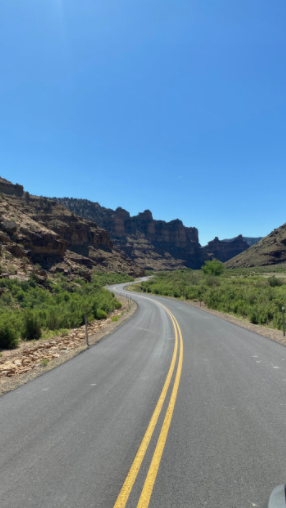
The day was perfect. The skies, the red rocks and the greenery were stunning. The road is now mosty paved (over objections from environmental wackos) to accommodate the gigantic oil trucks that ran both east and west. The trucks are now idled, so traffic is almost non-existent. There is a big natural gas pipeline though, looks like about a 16-incher, that runs through the canyon and is still in business. It takes natural gas from the east end of the Canyon (the Uintah Basin) and pipes it west to intersect the gas grid near Salt Lake City. That grid then runs all the way to the West Coast.
The app on your cell phone or the brochure will tell you where the major art stops are along the way.
One of the most interesting of the hundreds of ‘glyphs I’ll call The Theodolite. You can google that. Looks like the tripod-mounted laser Mike & I use to lay out sewers, foundations and roadways. That would require some basic math, and of course lasers, optics and a few other technologies. Hmmm.
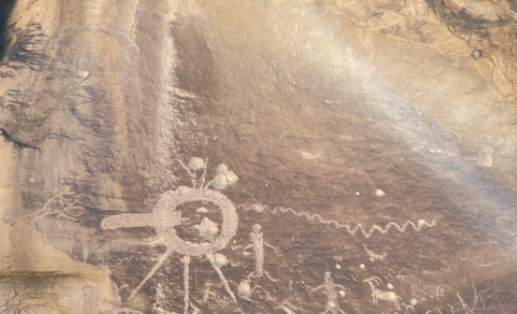
Nearby is what I’ll call Bubble Man. Mike and I couldn’t decide if these were bubbles (natives didn’t have access to soap, that we know of) or if this was a represention of a person approaching in the dark with multiple bright lights. That would indeed be impressive, since the brightest lights the natives had (that we know of) were camp fires, burning sticks and starlight.
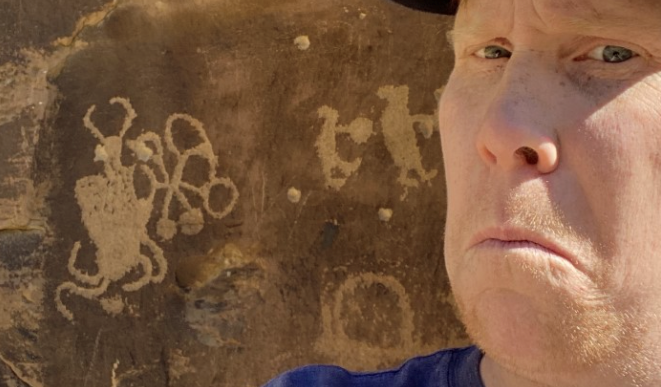
Some say it is a representation of Spider Woman, a deity who taught the natives how to weave. That could be. Natives did have access to peyote though, from their trading partners the Hopi and the Navajo to the south, so that could also be an explanation.
Speaking of trading, Utah was and is “The Crossroads of the West.” There was an active slave trade in North America long before the arrival of the white man (with apologies to New York Times 1619 historical revisionists). Passing travelers and war parties would often grab children or young people to use as slaves or as trade goods. As an example, search history.com for Sacagawea. She was kidnapped, enslaved, sold to pay off a gambling debt, married at age 12, and then while pregnant was offered as a guide and interpreter to Lewis & Clark and the Corps of Discovery (1804-6). So much for slavery & racial sterotypes.
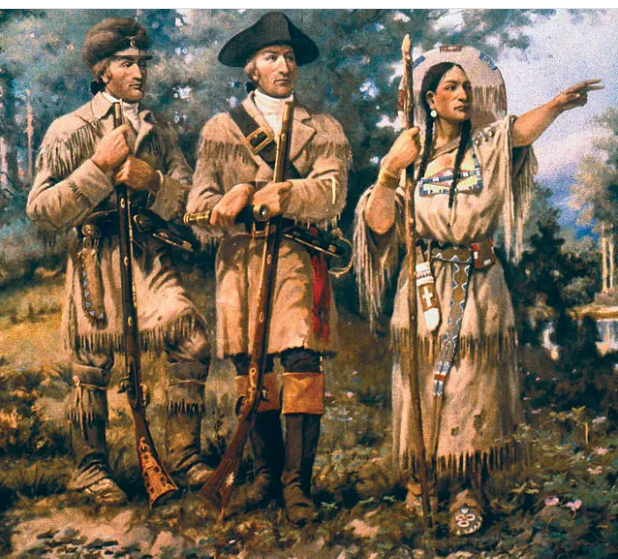
Besides the obvious difficulties (being careful not to impose my beliefs onto another culture), slave trading did act as a spike to the gene pool, which decreased the effects of inbreeding.
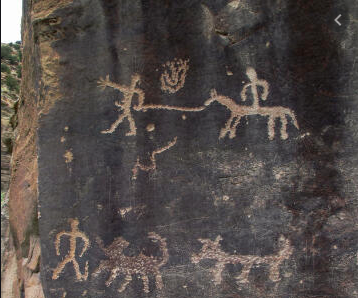
The horse arrived around 1680 (stolen from Spanish explorers), and that changed everything. Imagine you are a person about 5 ft. tall who eats grass, leaves, berries, and an occasional squirrel, with a top speed of about 10 MPH in a short sprint. Now you sit eight feet off the ground, on something that can move 50 MPH, weighs 2,000 pounds, and you can control it! Suddenly them buffalos, them deers, and them ‘noxious neighbors is ripe fer the killin’!
Nearby was a picture of 16 dots, which looked a lot like a calculator keyboard. Actually, there were two such pictures. Could the natives and their big-brained visitors have used a system of math based on the number 16?
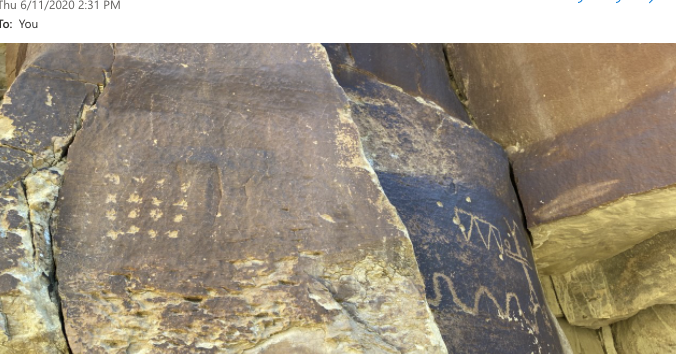
Our present culture uses a system based on the number 10, which we call metrics, while simultaneously employing another system based on the number 12, which we call dozenal. We use that to measure time, but it can also measure distance. It’s a very handy number, being easily broken into 1/2s, 1/4s, 1/8s, and even 1/5s and 1/6s. Try that with yer metrics, Mister “Accurate to the nth decimal!”
The Ancients may have used a system based on the number 16, which our culture has already given the name Hexadecimal, or just plain Hex. You’re probably most familiar with it in computers as a positional locating system. Remember 8 bits, 16 bits, and 32 bits? The movement of the heavenly bodies in the universe has been described as “dancing with math” and Hex could be the tune. It’s the same rhythm my phone app is using to locate me next to the petroglyph in a three-dimensional satellite fix.
Are these positional diagrams for the universe, or at least for our solar system?
Is the fourth dimension, time, hidden in there somewhere too? Maybe we just can’t see it .
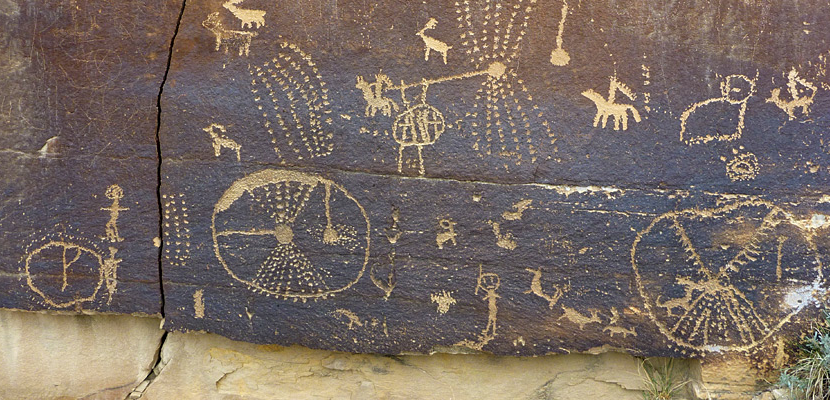
Our culture’s baby steps into space have found methane (natural gas) everywhere in the cosmos. The latest theory is that methane is part of the planet-building process and is captured underground by natural formations. It ain’t rotting dinosaurs! (Check out The Deep Hot Biosphere by Thomas Gold to read more about hydrocarbons seeping UP from the earth.)
This pump station in the canyon pushes the gas toward civilization.
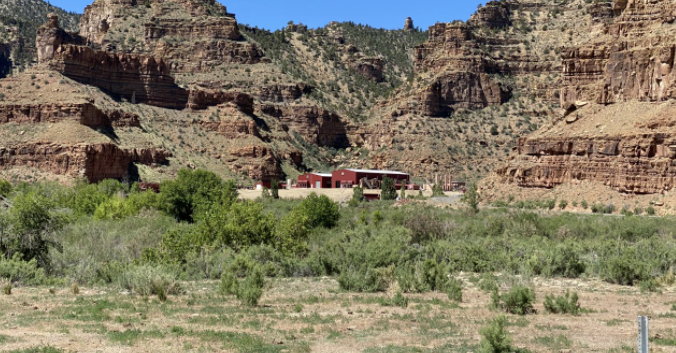
As we came out of the canyon into the small town of Vernal, we passed block after block of oil drilling equipment stacked behind locked gates. A local in the area said there hasn’t been a new well drilled in over two years. Fortunately, we have enough proven reserves to last for at least another 100 trips around our sun on Mother’s spinning clockworks.
For more cool pics, Google NINE MILE CANYON IMAGES.
A great trip …. & we’re headin’ home.
Thanks for listening.
Duane 06/10/20

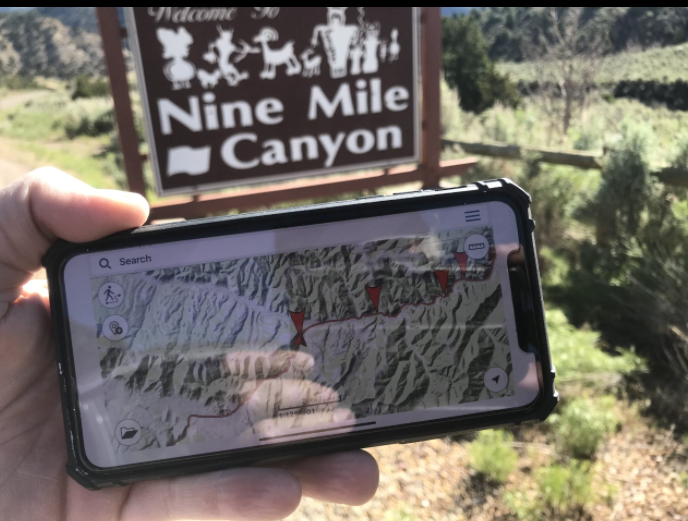
You guys amaze me. Glad you have the initiative , time , and inquisitive nature to investigate and verbalize your travels for our travels so we too can enjoy.
Thanks
Happy travels!
I had no idea that was there With all the miles I logged when I lived in Utah I cant believe I didnt go down that road!!!!!
Great article